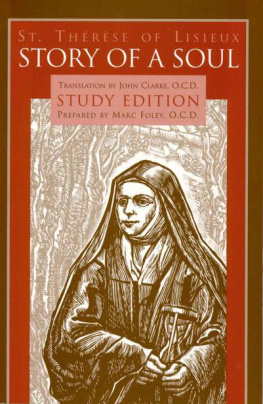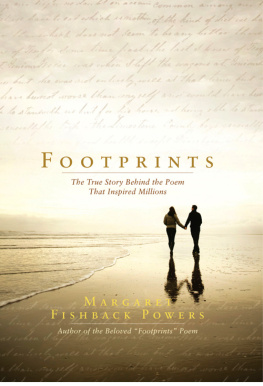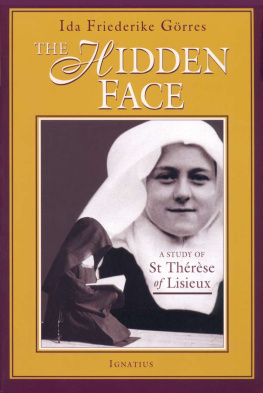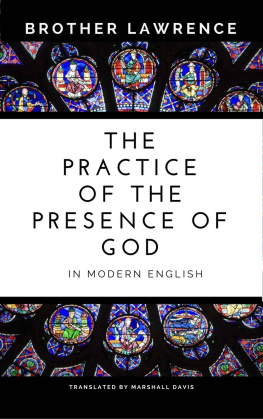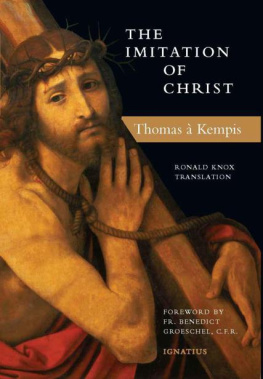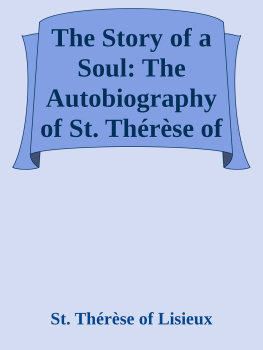
Story of a Soul
The Autobiography of
St. Thrse of Lisieux
Study Edition
Prepared by Marc Foley, O.C.D .
Translated by John Clarke, O.C.D.
From the Original Manuscripts
Third Edition
ICS Publications
Institute of Carmelite Studies
Washington, D.C. 2005
Story of a Soul is a translation of
Histoire dune ame: Manuscrits autobiographiques
Copyright Editions du Cerf and Descle de Brouwer, 1972.
Copyright Washington Province of Discalced Carmelites, Inc., 1996.
Study guide published 2005
ICS Publications
2131 Lincoln Road, N.E.
Washington, D.C. 20002
Library of Congress Cataloguing-in-Publication Data
Therese, de Lisieux, Saint, 1873-1897.
Story of a soul: the autobiography of Saint Therese of Lisieux/
Translated from the original manuscripts by John Clarke, - Study ed./
Prepared by Marc Foley
p. cm.
ISBN paper: 978-0935216-38-7
ISBN epub: 978-0-935216-99-8
Table of Contents
Introduction to the Third Edition
The growth of ICS Publications--indeed, its very existence--is due in no small part to the book you now hold in your hands. When the Institute of Carmelite Studies first decided in 1973 to republish the Kavanaugh-Rodriguez translation of St. John of the Cross, then out of print, no one could have guessed the outcome. The success of that initial volume, however, revealed an audience eager for more Carmelite spirituality.
ICS member Father John Clarke, O.C.D., a devotee of the Little Flower and experienced translator, then proposed undertaking a new translation of St. Thrse's autobiography, more faithful to what the Saint had actually written than any of the existing English-language versions. So limited were the funds that the first ICS Publications edition of Story of a Soul in 1975 had to be typeset by volunteers, and lacked even the benefit of the French accents. Rapid sales, however, allowed for a new edition the following year, complete with accents, indices, and a new cover. This second edition quickly became our best-seller, and has remained so for the past 20 years, far outstripping all other releases, and now used throughout the English-speaking world.
In translating Story of a Soul, as he explains in the following pages, Father John used Histoire d'une me: manuscrits autobiographiques (Editions du Cerf & Descle de Brouwer, 1972), a more popular one-volume version of the critical text established by Fr. Franois-Marie in the 1956 facsimile edition of Manuscrits autobiographiques . Following the wishes of her superiors, Thrse herself had written out the story of her brief life in ink and pencil, with few emendations, at odd moments as her health declined, on whatever paper was available (often of poor quality), and with no thought of eventual publication. Not surprisingly, as the facsimile edition reveals, the autograph is sometimes difficult to read, and shows countless variations in capitalizations, underlinings, the size, position, and slant of the letters, and so on (with some occasional corrections in a later hand). Because these variations could not be reproduced on a typeset page, Fr. Franois chose to represent all these indications of emphasis with italics, while capitalizing those words which the Saint had underlined two or more times. The 1992 "Nouvelle Edition du Centenaire" adopted slightly different typographic conventions, but in either case scholars can now check printed versions of Thrse's autobiography against the facsimile.
More importantly, because Thrse herself did not divide her work into chapters and numbered paragraphs, scholars have had to develop a standard method for identifying the original site of particular quotations. Increasingly, they use a system devised for the facsimile edition: Within the three manuscripts (A, B, and C) each leaf is numbered consecutively, followed by an indication of the "recto" (front) or "verso" (back) side of the page, and the line on which the text appears. Thus the words "my vocation is Love" (see p. 194 below) appear in the manuscript at Ms B, 3v, 25 (that is, on line 25 of the verso side of the third leaf in Manuscript B).
For this third ICS Publications edition, Jude Langsam, O.C.D.S. has accomplished the almost impossible task of resetting the pages in a new typeface while incorporating the new referencing system (in superscript brackets) and keeping the pagination virtually the same as before. Accordingly, students of St. Thrse will still be able to locate texts identified by page number in our previous editions, and at the same time can now find quotations identified by manuscript, page, and line number. Thus the "[2r]" in the upper left-hand corner of page 13 below indicates that the text of Thrse's autobiography starts on the "recto" or front side of the second leaf in Manuscript A. The beginning of every fifth line on the original autograph page is indicated by a bracketed superscript number, until one reaches the back of the same leaf with " [2v]" (at the bottom left-hand corner of the body text on page 13). Readers should note that the enumeration of pages and lines does not always follow in the expected order, particularly where Thrse's autograph jumps to a different page (see, e.g., pp. 17-20) or where she wrote across the bottom of facing pages (see, e.g., pp. 110-111). Nevertheless, with a little patience the sequence quickly becomes clear.
Finally, besides a number of small corrections and the addition of her "coat of arms," we have also included a short bibliography of resources on Thrse. Further studies of the Saint and her writings will no doubt appear in profusion during the centenary celebration of her death in 1996-1997.
Thanks are due to John Sullivan, O.C.D., of ICS, and Franoise de Chassey of Editions du Cerf, for the contractual arrangements and their unfailing cooperation; to Regis Jordan, O.C.D., for the initial typesetting and layout; to Jude Langsam, O.C.D.S, for her skilled editing and page design; to William L. O'Neill, C.PP.S., for his bibiliography; to Matthias Montgomery, O.C.D., and Salvatore Sciurba, O.C.D., for several emendations; to our proofreaders; and most of all to the late John Clarke, O.C.D., for making this treasure available to us.
Steven Payne, O.C.D.
Editorial Director, ICS Publications
Introduction to the First Edition
"I feel that my mission is about to begin, my mission to make God loved as I love Him, to teach souls my little way."
These words were spoken by St. Thrse of the Child Jesus on July 17, 1897, a few months before her death on September 30, 1897. When her sister, Mother Agnes of Jesus, asked her "And what is this little way you want to teach to souls?" Thrse answered: "It is the way of spiritual childhood, the way of trust and absolute surrender."
"After my death, you must not speak to anyone about my manuscript before it is published; you must speak only to Mother Prioress about it. If you act otherwise, the devil will lay more than one trap to hinder God's work, a very important work!"
She said this to Mother Agnes on August 1, 1897. There is a sense of urgency in the statement, a kind of "hurry up" or things just won't get done.
What Thrse was talking about and what she was closely associating with her "mission" and her "little way" was the publication of her writings. These contained her teaching as she had actually lived it out in her own human experience. We come across certain specific explanations of this "little way" in several places in her manuscripts, but the entire book is a lesson in how to live this "way of trust and absolute surrender." The book that you now hold in your hands contains this lesson.
This book may be looked on, then, as St. Thrse's legacy to the world, her personal message to "little ones." We know that her words during her last illness about a "mission" and a "little way" were not just the wanderings of a sick mind. Two popes solemnly endorsed these words within twenty-five years after her death, and both these popes tried their best during the process of her beatification and canonization to bring her teachings to the attention of the faithful and to urge their practice.
Next page
